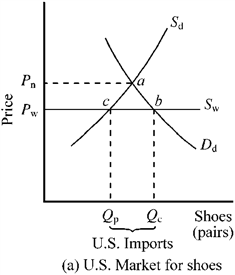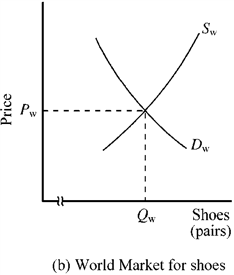Multiple Choice
Figure 17-1 
 In Figure 17-1, in the absence of trade, the domestic price of shoes would be Pn. If the United States moved from a no-trade situation to free trade, which of the following would happen?
In Figure 17-1, in the absence of trade, the domestic price of shoes would be Pn. If the United States moved from a no-trade situation to free trade, which of the following would happen?
A) The domestic price of shoes would rise, and domestic consumption would fall.
B) Both the domestic price of shoes and domestic consumption would rise.
C) Both the domestic price of shoes and domestic consumption would fall.
D) The domestic price of shoes would fall, and domestic consumption would rise.
Correct Answer:

Verified
Correct Answer:
Verified
Q26: Figure 17-10 <img src="https://d2lvgg3v3hfg70.cloudfront.net/TBX9063/.jpg" alt="Figure 17-10
Q27: The following table indicates the production possibilities
Q28: As a result of a tariff on
Q36: The law of comparative advantage explains why
Q36: Figure 17-6 The domestic country is China.<br><img
Q44: If labor-intensive textile products could be produced
Q78: Dumping<br>A) is the sale of a good
Q125: Compared to a no-trade situation, if Italy
Q147: Suppose the United States exports cars to
Q178: When foreigners export goods to the United